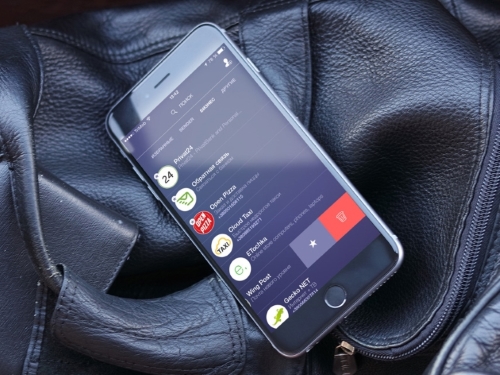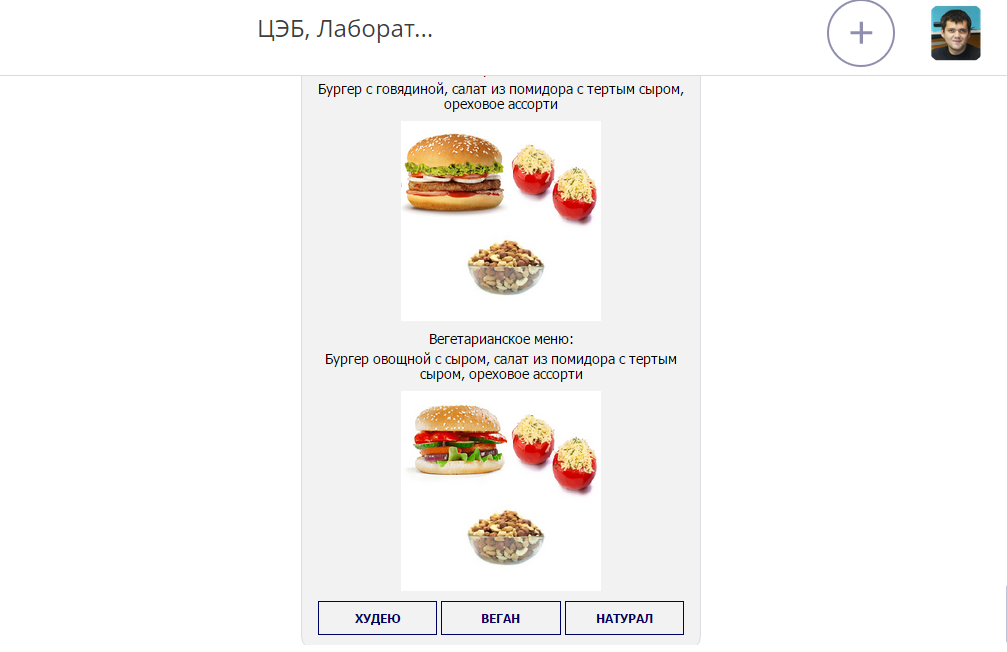How to use a messenger to call a taxi, order a pizza and chat with the bank
Every time when I call your provider or bank, I hear in the receiver “Your call is very important for us, please stay on the line”, I mentally swear to find the person who invented this text, handcuffed him to the battery and make him listen to this damn tune nonstop. I am sure many readers also spent more than one thousand nerve cells trying to reach the support service and wait for the operator to respond. A year ago, my patience was completely exhausted, and I decided to move all communications with companies online.
Now there are one and a half hundred applications installed on my phone and this figure is constantly growing. More than half of the programs are related to ordering certain services: five taxi services, ten air carriers, two dozen restaurants, a delivery service, online banking, online shopping, a personal account at my mobile operator, and many other necessary things.

')
The last year has turned into a battle for free space on the smartphone's starting screens - I travel a lot, I often order goods online, and I’m frankly tired of looking for the right applications among all this zoo. In addition, every time I have to enter my credit card details and regularly unsubscribe from spam emails that I get thrown by taxi services and restaurants. I set out to combine orders for services and the purchase of goods online within one platform and began to look for a solution to this problem.
The solution was found in the form of two messengers - Chinese WeChat and Ukrainian Sender. They are completely different from the applications we are used to. I am an active user of Skype, Viber, Facebook and Google Messenger. "Just in Fire" are Hangouts and Telegram. The main function of all the above programs is the transfer of text messages, as well as audio and video calls. WeChat and Sender invented a completely new mobile platform - "application in the application." Inside a single shell, dozens of other applications are hidden from various companies.

Both messengers are similar in functionality - but China is far away and Wehat is unpopular among Russian-Ukrainian users. At least, I have not met a single living person who uses it. It is much more interesting to figure out how this can work in the Ukrainian-Russian realities.
The chip Sender is that in the framework of the messenger, we can communicate not only with people, but also with companies. We open the section "Contacts", go to the tab "Business" and get into the personal account of the company, whose services we use. And if we want to call a taxi or order a pizza, then we don’t need to search for a mobile application, it’s enough to find a suitable service in business contacts.

In practice, it works as follows. Using one platform, we can order pizza, call a taxi, replenish the bill on the phone, ask a friend to throw money on a bank card, invoice it, chat with the support service of their bank, buy goods from the online store and do many other things. As soon as your taxi service or pizza vendor creates your app, it automatically appears inside the Sender platform.

One pizza business is not limited. In Sender, I have applications from New Mail and PrivatBank. Without leaving the messenger, I can track the status of the package, communicate with the bank support service and use the Privat24 functions. All these applications automatically appeared in my contact list — I didn’t have to do anything to add them.

Another interesting feature of Sender is billing your contacts. This is useful in cases when I need to send money to a friend and not bother with rewriting his bank card number. Or vice versa - get a money transfer. It often happens when people do not have cash when they pay their bills in a cafe. This problem is easily solved - I can pay the bill in full, and then invoice all my interlocutors in the application. A similar feature is in Facebook Messenger for Business, but it is still in its infancy.

We also use Sender for correspondence within the company - for example, for interactive surveys of what we eat for dinner or for sending information about new, interesting books. Sometimes the management arranges tests for us right in the messenger to find out how much we managed to learn the material covered :)

Applications for Sender are created using the lightweight FML (Form Markup Language) language based on JSON. For those who are not familiar with programming languages, there is a built-in form designer. True, it is still under development and works intermittently :) With regard to the server part and the description of business processes, this problem is solved by the Corezoid cloud operating system. Habré describes two processes created with its help: building a bot to order a taxi in Telegram and optimizing the operation of an online store .

I don’t know what Sender will look like in six months or a year, but I really like the idea of the application and the initial implementation. If one application is able to combine dozens of other applications and simplify communication with sellers of goods and services, then it will be damn cool. After all, it is much more convenient to chat with merchants in a chat than to make calls on forever busy phones and hang on the line for hours waiting for a connection with the operator. If they all went to hell.
Now there are one and a half hundred applications installed on my phone and this figure is constantly growing. More than half of the programs are related to ordering certain services: five taxi services, ten air carriers, two dozen restaurants, a delivery service, online banking, online shopping, a personal account at my mobile operator, and many other necessary things.

')
The last year has turned into a battle for free space on the smartphone's starting screens - I travel a lot, I often order goods online, and I’m frankly tired of looking for the right applications among all this zoo. In addition, every time I have to enter my credit card details and regularly unsubscribe from spam emails that I get thrown by taxi services and restaurants. I set out to combine orders for services and the purchase of goods online within one platform and began to look for a solution to this problem.
The solution was found in the form of two messengers - Chinese WeChat and Ukrainian Sender. They are completely different from the applications we are used to. I am an active user of Skype, Viber, Facebook and Google Messenger. "Just in Fire" are Hangouts and Telegram. The main function of all the above programs is the transfer of text messages, as well as audio and video calls. WeChat and Sender invented a completely new mobile platform - "application in the application." Inside a single shell, dozens of other applications are hidden from various companies.

Both messengers are similar in functionality - but China is far away and Wehat is unpopular among Russian-Ukrainian users. At least, I have not met a single living person who uses it. It is much more interesting to figure out how this can work in the Ukrainian-Russian realities.
The chip Sender is that in the framework of the messenger, we can communicate not only with people, but also with companies. We open the section "Contacts", go to the tab "Business" and get into the personal account of the company, whose services we use. And if we want to call a taxi or order a pizza, then we don’t need to search for a mobile application, it’s enough to find a suitable service in business contacts.

In practice, it works as follows. Using one platform, we can order pizza, call a taxi, replenish the bill on the phone, ask a friend to throw money on a bank card, invoice it, chat with the support service of their bank, buy goods from the online store and do many other things. As soon as your taxi service or pizza vendor creates your app, it automatically appears inside the Sender platform.

One pizza business is not limited. In Sender, I have applications from New Mail and PrivatBank. Without leaving the messenger, I can track the status of the package, communicate with the bank support service and use the Privat24 functions. All these applications automatically appeared in my contact list — I didn’t have to do anything to add them.

Another interesting feature of Sender is billing your contacts. This is useful in cases when I need to send money to a friend and not bother with rewriting his bank card number. Or vice versa - get a money transfer. It often happens when people do not have cash when they pay their bills in a cafe. This problem is easily solved - I can pay the bill in full, and then invoice all my interlocutors in the application. A similar feature is in Facebook Messenger for Business, but it is still in its infancy.

We also use Sender for correspondence within the company - for example, for interactive surveys of what we eat for dinner or for sending information about new, interesting books. Sometimes the management arranges tests for us right in the messenger to find out how much we managed to learn the material covered :)

Applications for Sender are created using the lightweight FML (Form Markup Language) language based on JSON. For those who are not familiar with programming languages, there is a built-in form designer. True, it is still under development and works intermittently :) With regard to the server part and the description of business processes, this problem is solved by the Corezoid cloud operating system. Habré describes two processes created with its help: building a bot to order a taxi in Telegram and optimizing the operation of an online store .

I don’t know what Sender will look like in six months or a year, but I really like the idea of the application and the initial implementation. If one application is able to combine dozens of other applications and simplify communication with sellers of goods and services, then it will be damn cool. After all, it is much more convenient to chat with merchants in a chat than to make calls on forever busy phones and hang on the line for hours waiting for a connection with the operator. If they all went to hell.
Source: https://habr.com/ru/post/368533/
All Articles